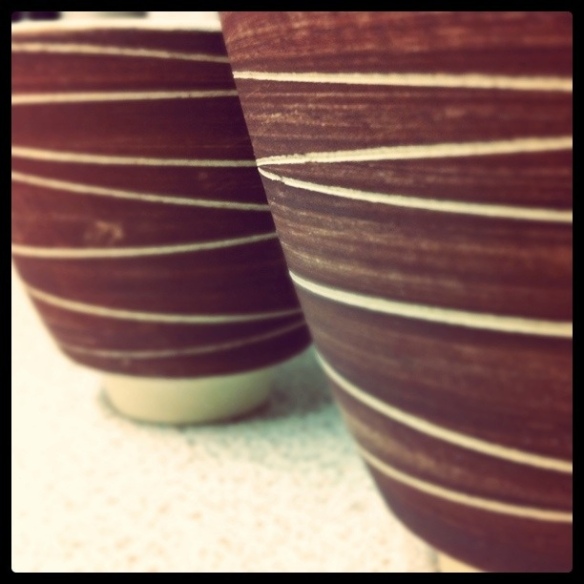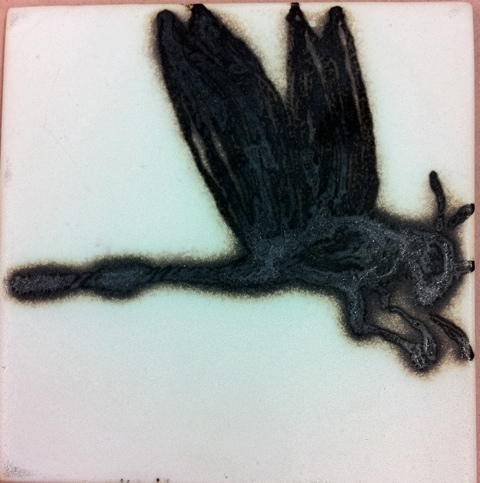 London is a great place for enjoying cocktails. That’s just as long as you can stomach the prices you pay. Since moving here six months ago, I’ve sampled a fair few, when I’ve had the chance and been feeling flush. So much so that I think I can say with some certainty that I’ve realised my taste runs mainly to the classics. Not that the photo above could be described as a classic – it’s Kopapa’s Passion Fruit Batida, which they describe as ‘fresh lime, passionfruit and cachaça sweetened with a little sugar, served short & laced with Myers’s rum’. The barman persuaded me to try it, and though it was lovely, it was still too sweet for my taste. It was a pleasure to watch him work, though.
London is a great place for enjoying cocktails. That’s just as long as you can stomach the prices you pay. Since moving here six months ago, I’ve sampled a fair few, when I’ve had the chance and been feeling flush. So much so that I think I can say with some certainty that I’ve realised my taste runs mainly to the classics. Not that the photo above could be described as a classic – it’s Kopapa’s Passion Fruit Batida, which they describe as ‘fresh lime, passionfruit and cachaça sweetened with a little sugar, served short & laced with Myers’s rum’. The barman persuaded me to try it, and though it was lovely, it was still too sweet for my taste. It was a pleasure to watch him work, though.
Interestingly, I’ve occasionally tried a few cocktails on my regular trips around Europe, and what I seem to find there is that cocktails are more part of the everyday landscape, but at the same time that this seems to have led to them becoming rather run of the mill. For instance, a cocktail that I tried at a bar run by Martini and D&G at the Dolce e Gabbana flagship store in Milan. The salty food to go with the drink was a total necessity, but the martini itself was a let down. The gin simply wasn’t up to the job, and they’d added too much vermouth. Here in London, I’ve had carefully made martinis in the Harvey Nichols bar and also (strangely) in the 5th View Bar at Waterstone’s Piccadilly. The latter know exactly what they’re doing – a choice of gins, dirty or clean, served however you like. They come to your table to mix it too, which adds a fun bit of theatre.
For myself, though, I’ve yet to come across a cocktail that I could drink more happily than a margarita. You can get good ones all over London, but two things often let them down. First of all, there’s a tendency to make them too sweet. Second, you’ve got to use quality tequila and quality orange liqueur. For me, Cointreau’s the only serious option. But that still leaves lots of imponderables. I used to make margaritas at home with a proper margarita glass. But they’re currently lost in transit, so I’ve been making do with a taller glass recently (actually, for those who are interested in such things, it’s an Ittala glass designed by Aino Aalto back in 1932). The problem with a taller glass is that unless you’re going to serve yourself an enormous margarita, you’re forced to serve it over ice…
… and that’s where the pictured margarita falls down, though the melting ice does at least mean that the drink lasts a little longer. Home made cocktails can be wonderful, but they sure are hard work! However, I may have discovered a potential solution. I have a local pub where one of the bar staff makes fabulous cocktails – he’s quite the artist, in fact. The pub is The Lost Angel in Battersea, one of a group of four venues owned by the same team. The decor’s a bit naff, but I’ve come to love the place. I can particularly recommend the Espresso Martini. Now there’s something that you could hardly call a classic…












